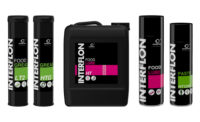Strategies for using refurbished equipment in snack and bakery production
When does it make sense to refurbish equipment?

Cost, safety, efficiency, footprint, operator familiarity, and the ability to meet regulations are among the key factors that snack and bakery facilities need to consider when deciding whether to keep and refurbish an old piece of equipment, or send it to the scrap heap and buy new.
Maximizing equipment potential
Bundy Baking Solutions, Urbana, OH, focuses on refurbishing mixers and finds that customers wanting to refurbish most often are stymied by the need for a new bowl or upgraded electrical equipment, says Jim Blum, sales manager. “Those are the two big-ticket items that drive the cost to the point where you’re looking at a new mixer,” he says.
Reengineering equipment so it’s up to code is another challenge, and Bundy refuses to refurbish a machine for reasons related to safety and liability unless the client is willing to pay to take it to code, says Joe Spaugy, aftermarket and technical sales manager. But if a mixer frame can be reused, or if the mixer fits a specific footprint where the mixer works well, those factors make rebuilding more viable, he says.
Machines with steel frames should generally be scrapped, Blum says, as should those with electrical that’s very outdated. “It sometimes costs more to put new electrical on it than to start from scratch,” he says. Spaugy adds that new mixers tend to be easier to clean because they’ve been built with sanitation in mind, reducing a four- to five-hour window down to as little as a half-hour, which is another factor worth keeping in mind.
Topos Mondial Corp., Pottstown, PA, also primarily focuses on mixers, along with makeup equipment and back-end slicing and tying equipment, says Scott Fischer, vice president of sales. He defines “refurbished” as replacing parts, ensuring that a machine is operational, and being able to offer a warranty.
Fischer suggests refurbishing “if the main entity of a piece of equipment is still in good shape, and you can get it back to a good condition,” he says. He would counsel the replacement option “if you can’t identify the fact that it would be cost-effective to replace worn parts and do minimal other, maybe cosmetic changes.”
Refurbishment can produce savings of between 30 percent and 60 percent depending on the condition and age of the equipment, Fischer says. The other primary benefit can be timing, with refurbished equipment ready to be shipped within six to eight weeks, whereas the lead time on a new piece of equipment can be up to a year. “What COVID has emphasized for not only our company but a lot of companies—customers, bakeries and snack manufacturers—is the time needed to make the change,” he says.
Refurbished equipment must be compliant with the Food Safety Modernization Act (FSMA) and current OSHA regulations, as well as ensuring that electrical and motors meet today’s requirements, Fischer says. “If it takes replacing electrical and controls, that would make it not cost effective,” he says. “Safety would also include sanitation: You need to make sure there are no places for harboring infestation. We would go through with a fresh eye toward what would this piece of equipment take to meet the standards.”
Customers sometimes simply want to maintain familiarity of manufacturer and model numbers, and they’re looking for exact replacements and upgrades, Fischer says. “Operations, maintenance, and engineering already know that type of mixer or divider,” he says. “Or it’s the fact that that piece of equipment has a track record of producing the same product.”
BakeryEquipment.com, Tipton, MO, refurbishes all types of equipment for bakeries and snack manufacturers, although mixers and ovens are probably most common, according to Rick Evans, president and CEO. He estimates that a refurbished piece of equipment probably saves 50 percent to 60 percent and can be turned around in eight to 10 weeks, whereas buying new could take several months.
“We have 90,000 square feet of bakery equipment on the shelf, waiting for buyers to buy it,” Evans says. “Once they put a deposit down, we start refurbishing. A lot of times, they will want something to match their piece of equipment and replace apples-for-apples, where that apple may not be being built anymore because that apple is 20 years old. And we have it.” But price point and turnaround times are the key factors, he says.
During the past few decades, snack and bakery machines have come a long way in terms of sanitation and safety, including safety guards and component controls, Evans says. He sells equipment four different ways: as is; shop tested with a 30-day warranty, which includes steam cleaning and replacement of belts and wire components; reconditioned with a 90-day warranty, which also includes electrical replacement; and remanufactured with a 6-month warranty, which adds safety guards.
“It’s like having a used car,” Evans says. “Once you start dumping money into an old junker every week, it’s time to get a new one. Once the ROI is not worth it, then you replace it.”
Lenexa Manufacturing Co., Lenexa, KS, mostly focuses on bun and bread slicers and baggers, says David Latty, sales manager. He figures that machines with quality frames only needing parts to be replaced make good candidates for refurbishment and estimates savings of one-quarter to one-third vis-à-vis a new machine.
Reasons to refurbish
“What motivates somebody? Maybe that piece of equipment is a reliable, strong performer,” says Latty. “Why upset the apple cart? It’s lasted you 30 years. Refurbishment will put you in the neighborhood of another 30 years, with new technology.”
Other motivations that Latty cites are footprint, given the limited space of many bakeries and snack makers, and operator familiarity. “The machine may have been built custom to fit that space,” he says. “It could be rather costly to get the exact proportions with a new machine. And you also have a level of understanding on how to operate that machine. Typically, older models are accessible to people with varying degrees of technology knowledge. New machines are more advanced and may or may not be desirable for the crew you have running that plant.”
Older machines may need upgrades such as motors that are inefficient and require additional work, or air leaks that keep the compressor from running in the most efficient manner. “Compressed air is one of the costliest aspects of running one of these machines,” Latty says. “Efficiency issues on old machines can be addressed with refurbishment.”
Safety is another one, starting with lower voltage electrical equipment. “It’s the same thing with perimeter guarding around the machine,” says Latty. “We put on something seven to eight feet high that only allows certain access points. In the old-school days you might have had a piece of sheet metal bolted on, and maybe the maintenance crew got tired of bolting it back on and left it off. We can integrate safety that just wasn’t there when these machines were built.”
At a certain point, the overall function, appearance and cleanliness of a machine reaches a past-due date, Latty says. “It may be to the point where it’s just not worth it anymore,” he says. “If you can upgrade an old piece of equipment that used to require three operators, and take that down to 1½ or 2, you’ve got labor savings that you can refocus to benefit other areas of the plant.”
Probake, Twinsburg, OH, has refurbished a “huge variety” of machines for snack and bakery companies, says Clay Wallace, general manager. He mentions many of the same parameters as others in deciding whether to refurbish or replace: the cost of parts and labor vs. the selling price, operator familiarity with a particular model, and issues related to maintenance and safety.
“A lot of the older machines aren’t equipped with the proper safeties that are required in the new machines,” Wallace says. “Before parting our facility, we need to make sure we buy or manufacture these required safeties.”
Looking for a reprint of this article?
From high-res PDFs to custom plaques, order your copy today!





